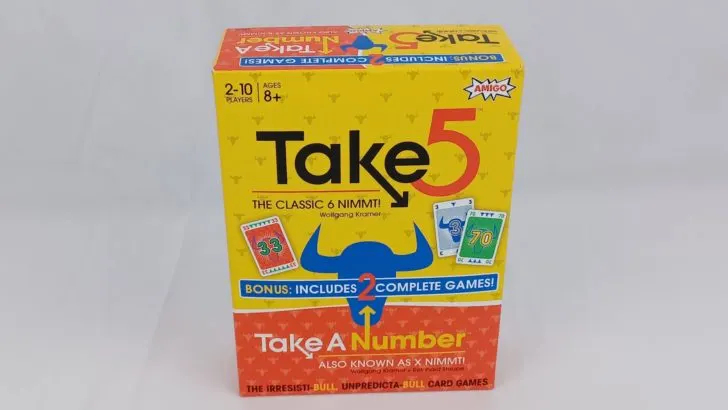Objective of Take A Number (X Nimmt!)
The objective of Take A Number (X Nimmt!) is to score the fewest penalty points after two rounds.
Setup for Take A Number (X Nimmt!)
- Place the 3, 4, and 5 Row Cards in a column with the 3 at the top.
- Each player takes one # Row Card and places it face up in front of themselves.
- Shuffle the Number Cards. Place one card face up next to each Row Card.
- Deal eight Number Cards to each player. Players can look at their own cards, but should not let the other players see them.
- Set the rest of the Number and Row Cards aside. You won’t use them until the next round.
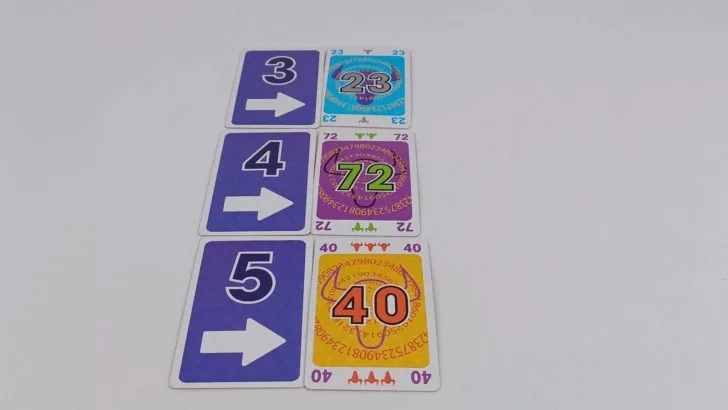
Playing Take A Number (X Nimmt!)
You will play Take A Number (X Nimmt!) over a number of rounds. Each round consists of a number of turns. You will keep playing turns until one player has no cards remaining in their hand. Each turn consists of the following actions.
Choosing A Card
To begin each turn all of the players will choose one of the cards from their hand to play. They will place the card face down in front of themselves. After everyone has chosen their card for the turn, all of the players will reveal their chosen cards.
Playing Cards
Starting with the player that played the lowest numbered card, each player will play their chosen card to one of the three rows in the middle of the table.
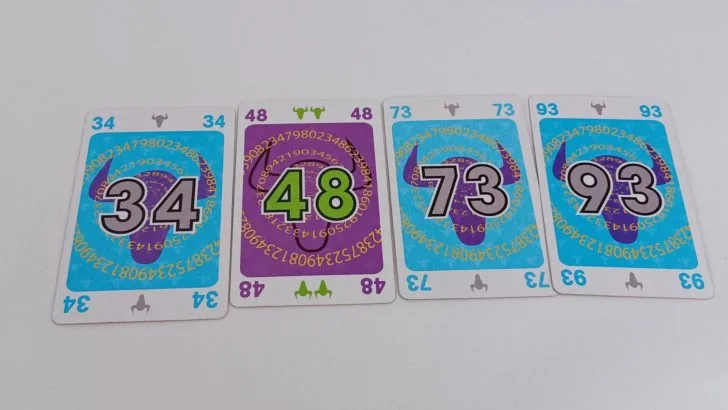
You will play the card to the right of the rest of the cards in the row. You must follow two rules when deciding which row to play a card to.
First the card’s number must be higher than the rest of the cards in the row. The card values in each row should increase from the left to the right.
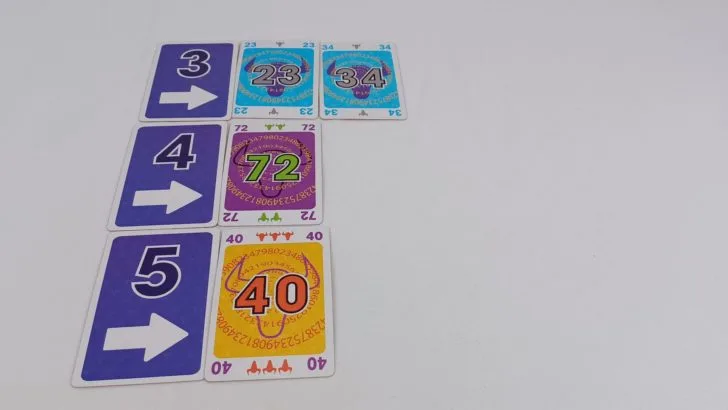
If there are two or more rows that you can play the card to, you will choose the row whose number is closest to the number you played.
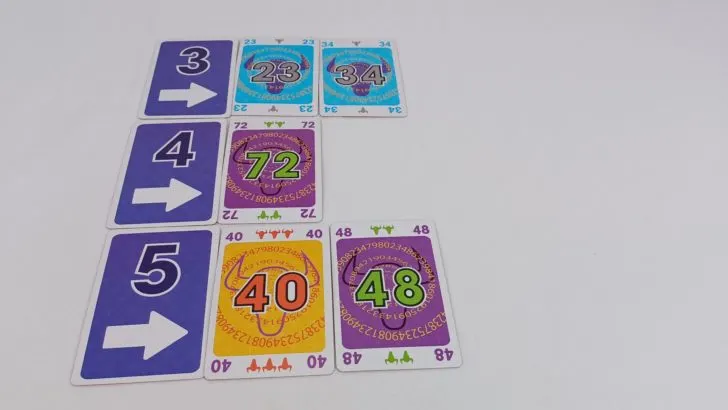
After a player plays their card to one of the rows, the player that played the next lowest card plays their card. This continues until all of the players have played their chosen card to one of the rows. If the round has not ended, another turn will be played.
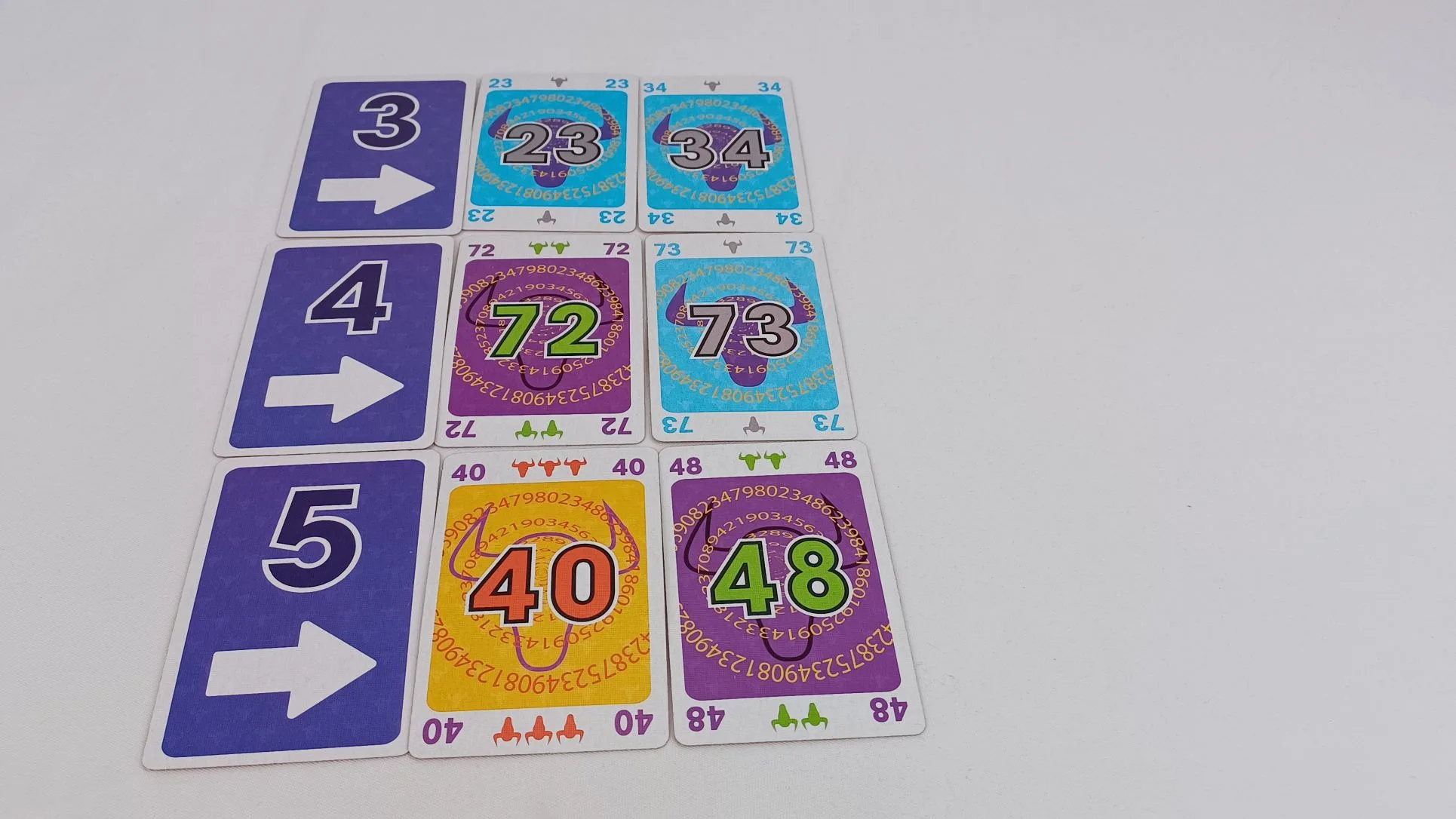
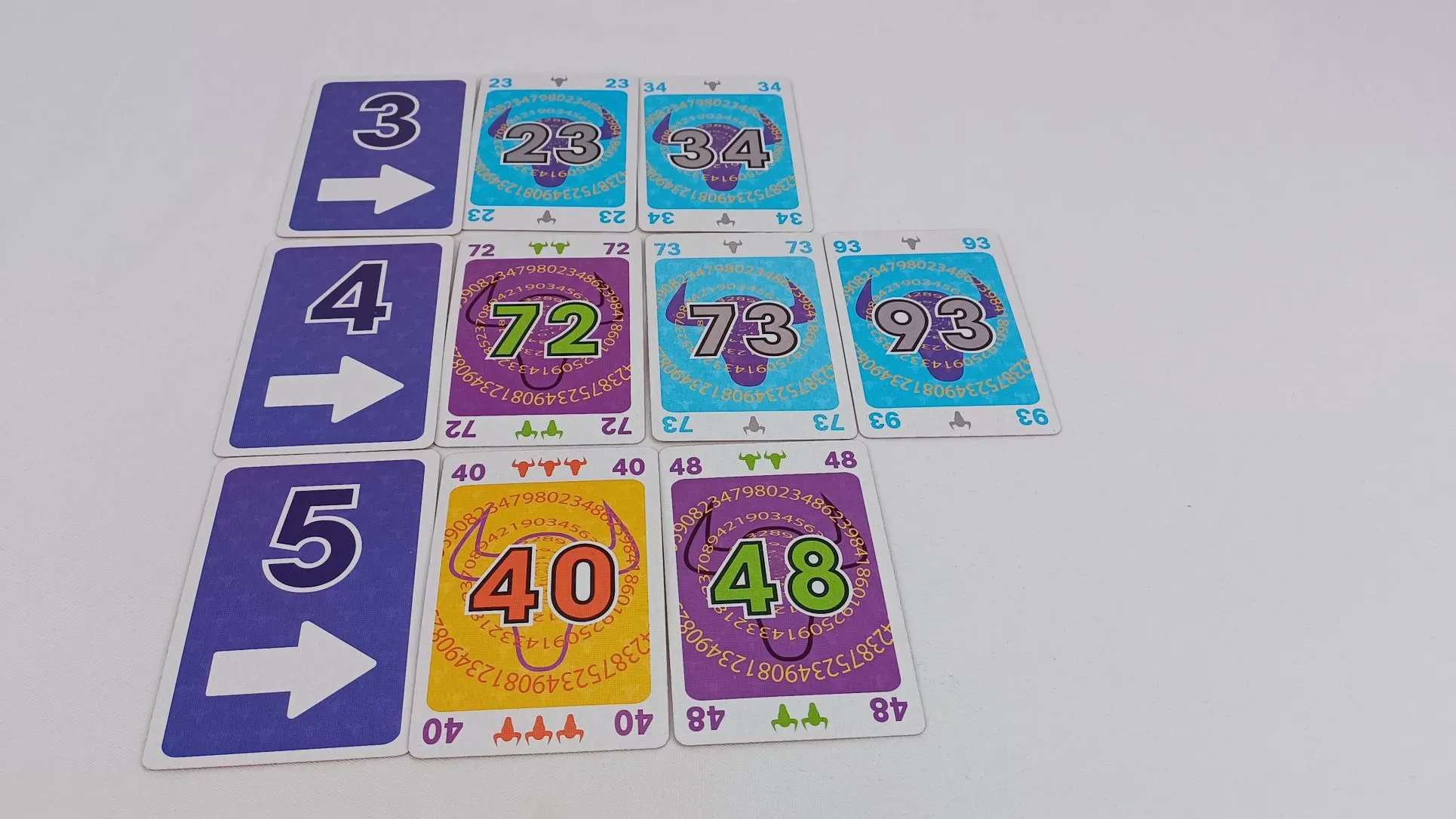
Taking A Row
Each Row Card has a number printed on it. The number indicates how many cards can be added to the corresponding row before it becomes full. You may not play a card to a row once it becomes full. The player who plays the last card to a row, has to take all of the cards from the corresponding row. The card that they played to the row, stays in place as the starting point for the new row.
For an example lets look at the three card row. The player that plays the third card to the row has filled it. They will take the two cards previously in the row. The third card they just played will be placed next to the 3 Row card to restart the row.
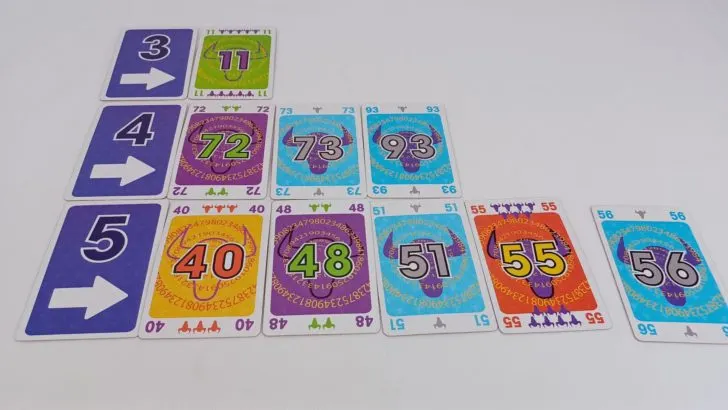
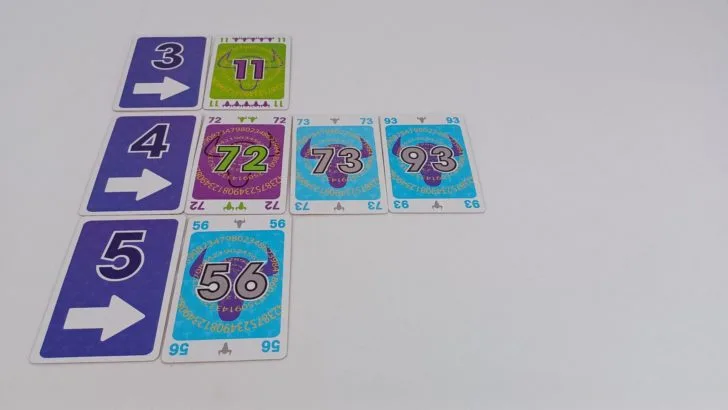
See the Taking Cards section below to see what the player does with the cards that they just took.
Playing A Low Card
Sometimes you will play a card that is lower than the highest card in each of the rows. In this case the player gets to choose one of the three rows. They will take all of the cards from the row they chose.
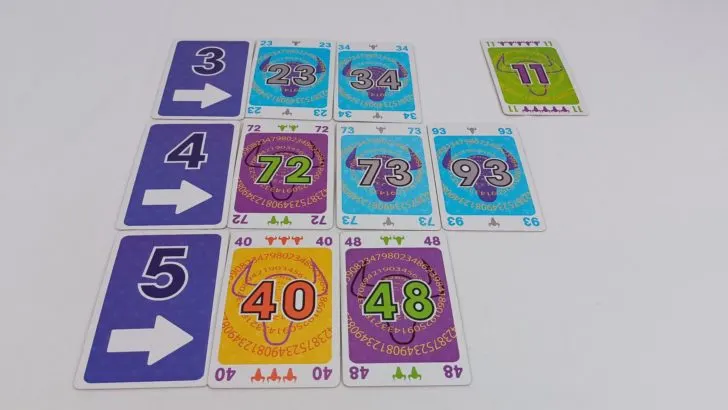
The card they played will then replace the row that the player took.
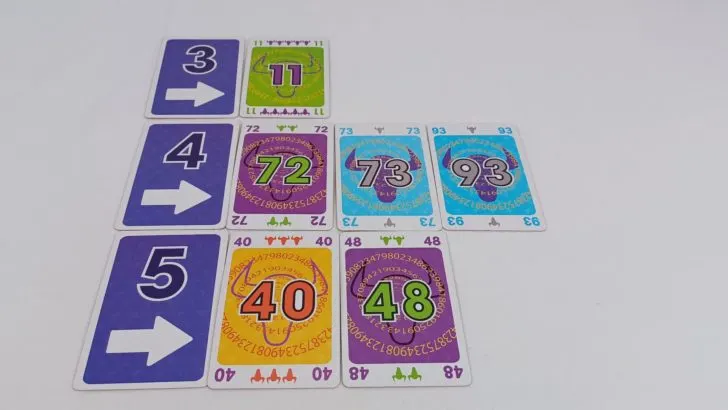
See the Taking Cards section below to see what the player does with the cards that they just took.
Taking Cards
Throughout the game players will end up taking cards from the middle of the table due to either taking a row, or playing a low card.
First they will chose one of the cards they took to add to their # Row. They will place the first card in their # Row face up next to their # Row Card.
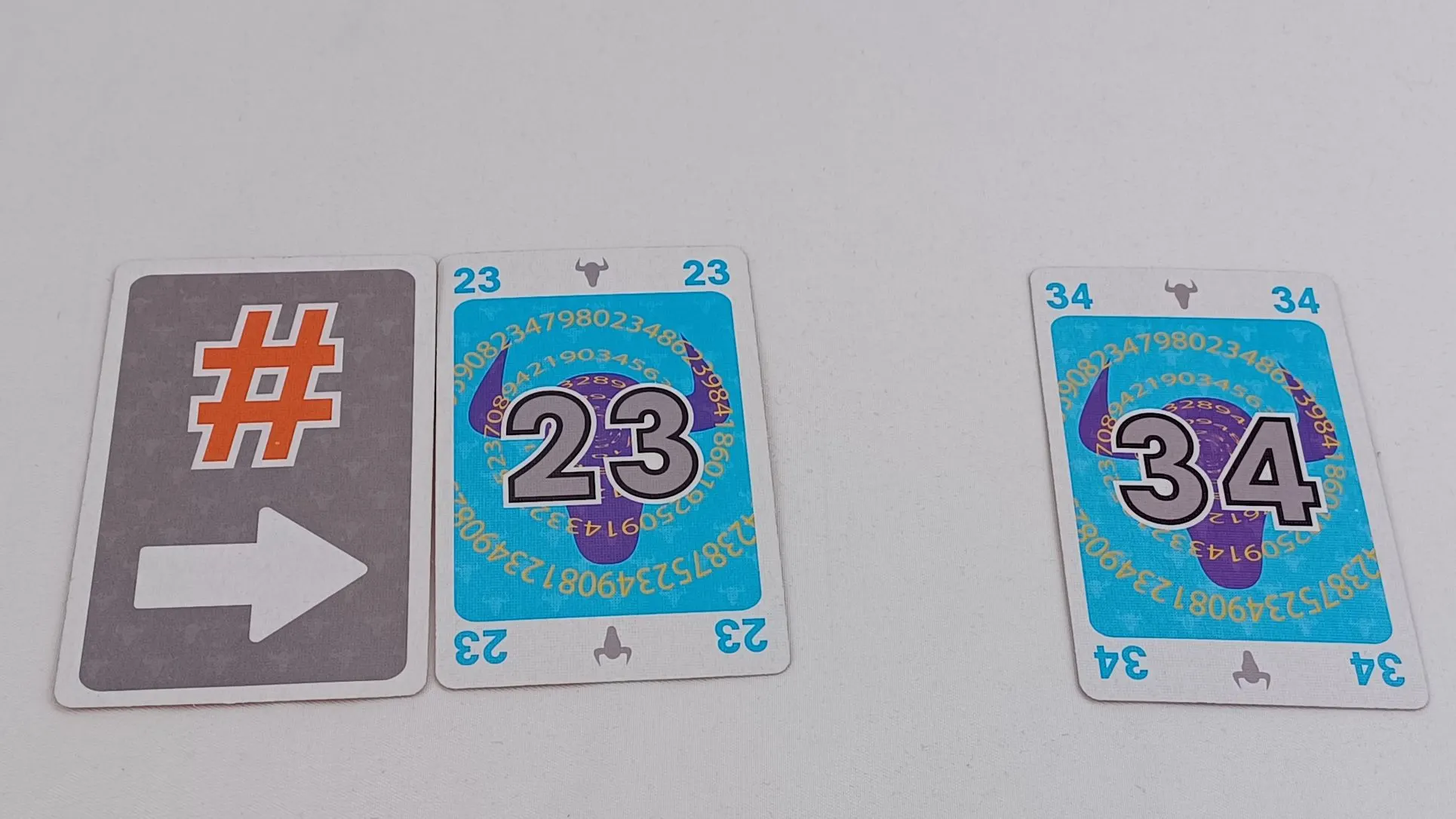
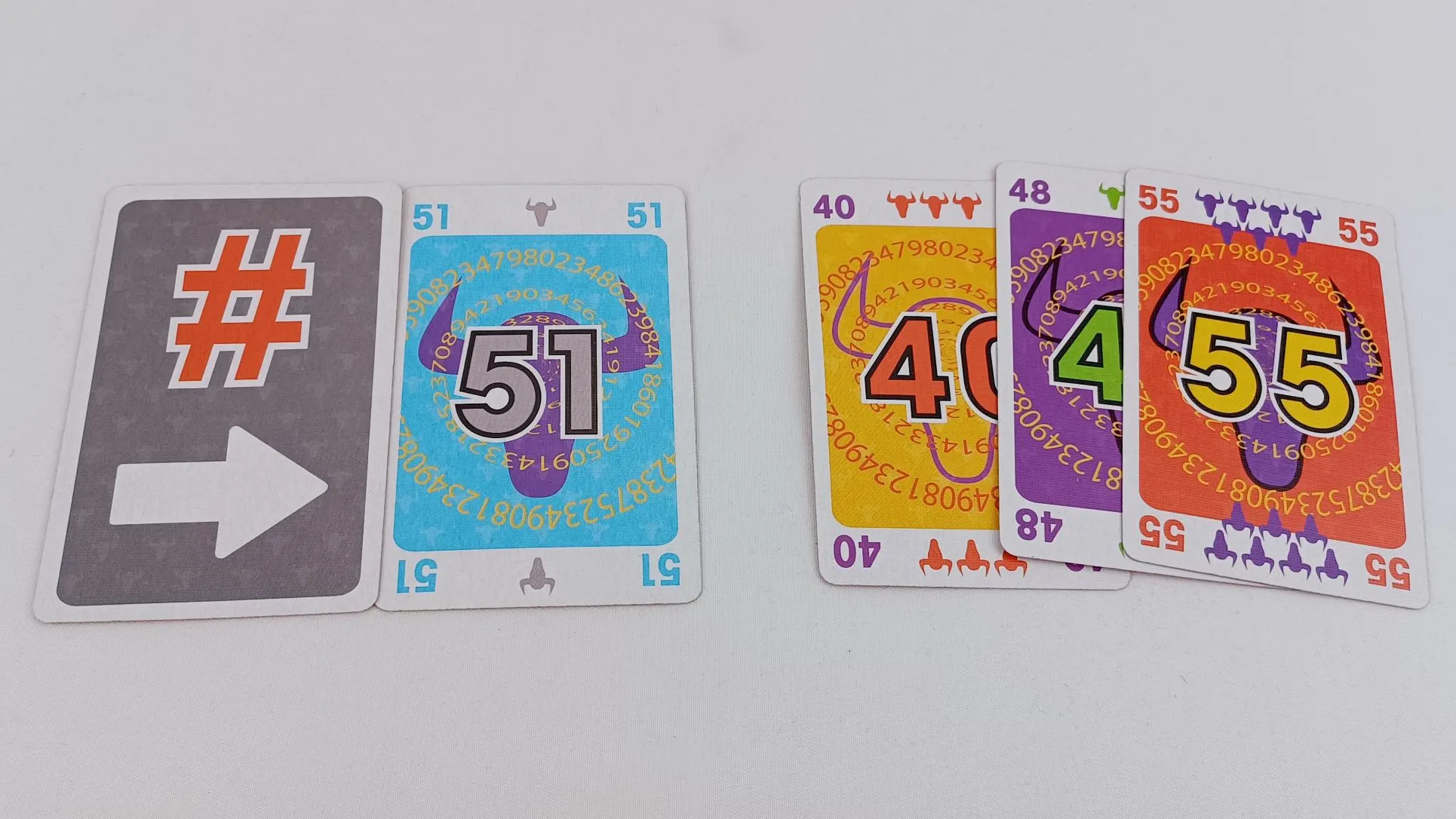
After the first card is added to the row, all future cards must be higher than the highest card in the row. Thus the card values should increase moving from the left to the right.
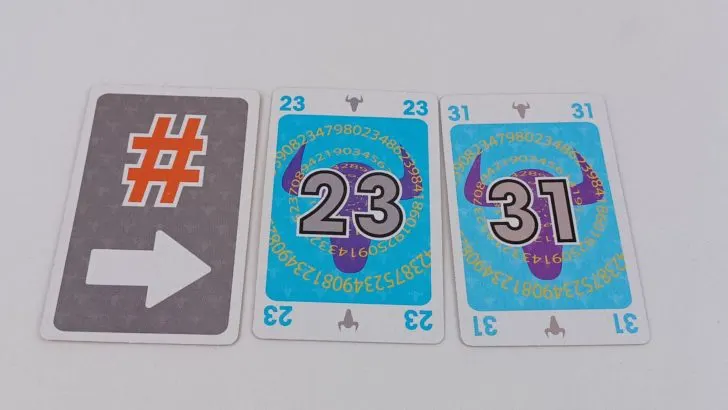
Adding Cards to Your # Pile
Should you end up taking cards that are not higher than the highest card in your # Row, you will collect all of the cards currently in your # Row.
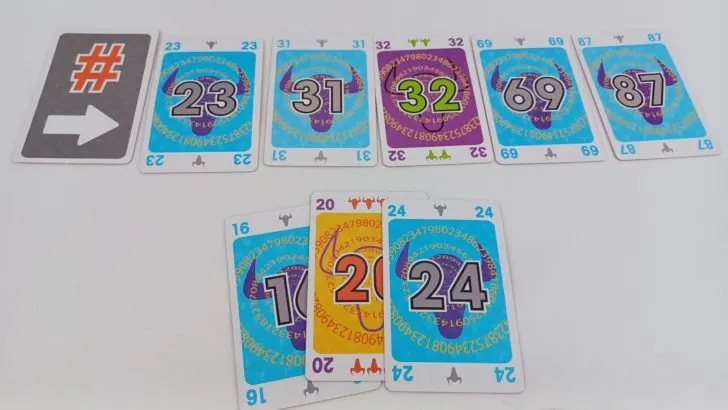
You will turn these cards face down and place them to the left of your # Row Card. These cards will form your # Pile.
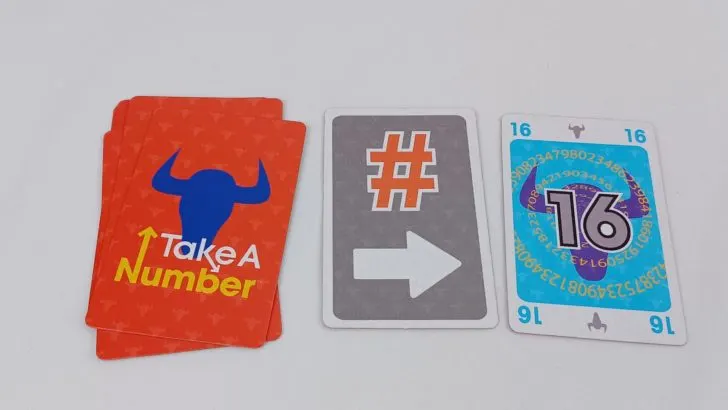
The card that you were trying to add to the # Row will now be placed to the right of the # Row Card to start your new row.
If the player ended up taking more than one card from the middle of the table, they will add the rest of the cards to their hand.
End of Round and Scoring
The round ends as soon as one of the players has no cards left in their hand at the end of the current turn. If the player has to add cards to their hand after playing a card, this does not end the round. All of the cards played in the current turn will be played to the rows like normal. The game will then move onto scoring.
Players will score penalty points as follows:
- You will score one penalty point for each bullhead pictured on the cards left in your hand at the end of the round.
- You will score two penalty points for each bullhead pictured on the cards in your # Pile.
- You will not score any penalty points for the cards in your # Row.
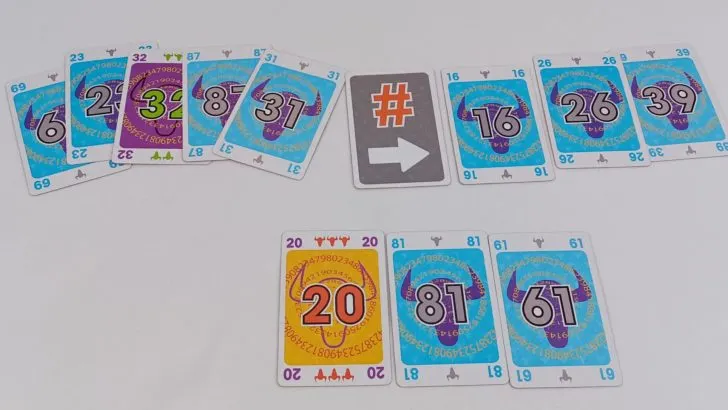
Someone will write down how many penalty points each player scored in the round.
You will then play a second round in the same way as the first round.
End of Take A Number (X Nimmt!)
The game ends after the players complete the second round.
All of the players will compare the total number of penalty points they scored in both rounds. The player that scored the least penalty points wins the game.
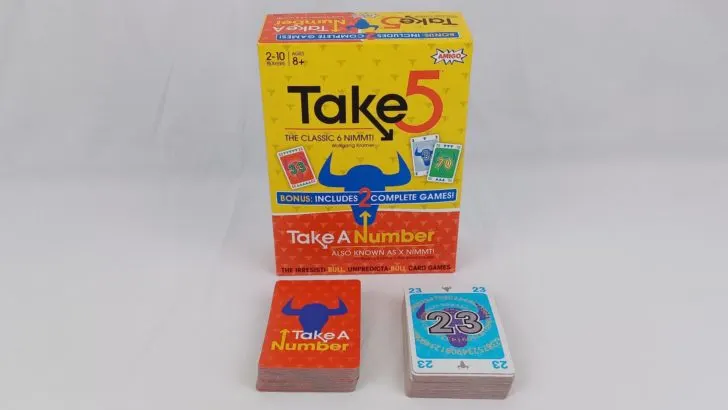
Year: 2016 | Publisher: AMIGO | Designer: Wolfgang Kramer, Reinhard Staupe | Artist: Oliver Freudenreich
Genres: Card
Ages: 8+ | Number of Players: 2-4 | Length of Game: 20-30 minutes
Difficulty: Light | Strategy: Light-Moderate | Luck: Moderate
Components: 100 Number Cards, 7 Row Cards, Instructions
Where to Purchase: Amazon, eBay Any purchases made through these links (including other products) help keep Geeky Hobbies running. Thank you for your support.

